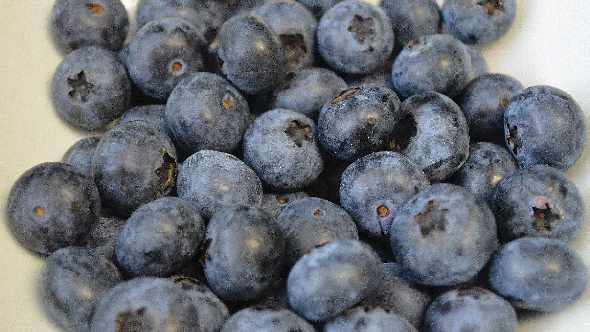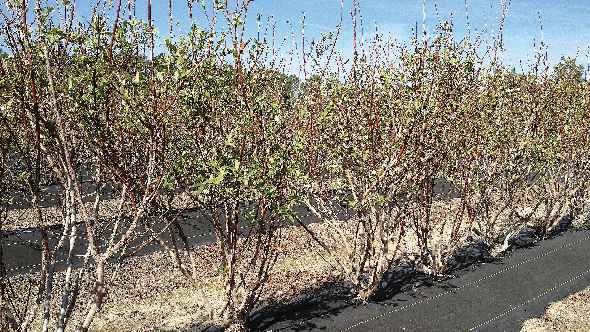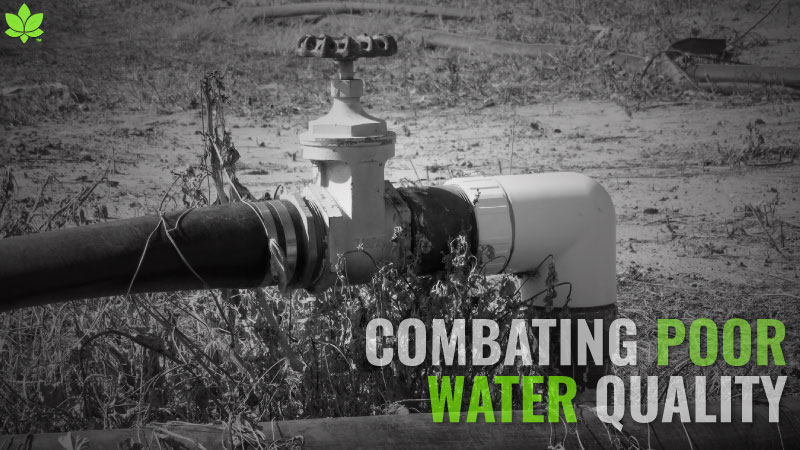Indigocrisp Blueberry Promises To Deliver Plenty Of Pop

Photo by James Olmstead
Indigocrisp is a new southern highbush variety released from the UF/IFAS blueberry breeding program. Indigocrisp resulted from a cross made in 1996 by Paul Lyrene between the unnamed selection FL96-27 and Windsor, and was tested as FL98-325. It was released in 2013, and a U.S. plant patent was applied for later that fall.
Indigocrisp is a vigorous, upright-growing bush with large, narrow dark green leaves. In trials, Indigocrisp has been susceptible to Botryosphaeria stem blight, which can cause stem dieback and whole plant death in severe cases. The estimated chill requirement for Indigocrisp is 300 hours below 45°F. This is based on inconsistent cropping and vegetative budbreak in areas south of Gainesville, FL, that receive less than an average of 300 chill hours in a season. Indigocrisp does respond favorably to hydrogen cyanamide application, with a condensed bloom period and earlier prolific leafing.

Photo by James Olmstead
The average bloom date of Indigocrisp in Gainesville is Feb. 13, similar to Farthing and Star, and approximately a week later than Emerald and Meadowlark. Like most southern highbush blueberries, planting additional varieties for cross pollination is recommended to achieve the best fruit set on Indigocrisp.
Indigocrisp ripens early to mid-season, starting just after Springhigh. It is the earliest ripening of the crisp-textured varieties released from UF/IFAS. Yields are acceptable for an early-season variety, but do not reach the levels of high-yielding varieties such as Emerald or Farthing. Indigocrisp berry size is large, with high soluble solids and consistently low titratable acidity in laboratory trials that results in a mild, very sweet flavor.
Consistency Is Key
The key attribute that differentiates Indigocrisp from many other southern highbush blueberries is its crisp fruit texture, similar to Bluecrisp and Sweetcrisp. This texture has been shown in trials conducted at the University of Florida and the University of Georgia to be important for machine harvest for fresh marketing potential of a variety. Indigocrisp has had among the highest packout percentages after machine harvest that we have recorded, and varieties with crisp fruit texture like Indigocrisp have been shown to have much longer postharvest potential.
Crisp fruit texture also allows fruit to be held on the bush longer between harvests before quality degrades, which is an important management tool to make machine harvest more efficient.
In a consumer taste panel conducted at UF/IFAS in 2013, the crisp texture of Indigocrisp was preferred to standard textures found in other common southern highbush blueberries.
Still Some Wood To Chop
The biggest difficulty with Indigocrisp has been lack of consistent propagation by standard softwood cuttings. Initial budwood distribution is limited, so licensed propagators are strongly encouraged to establish a mother block that can be maintained as a source of cutting material for future propagation. Indigocrisp is a protected variety and a license must be obtained for propagation and sale of plants.
License information can be obtained from Florida Foundation Seed Producers (FFSP) at 352-273-3656 or FFSP.net. A list of currently licensed propagators can be found on the FFSP website for growers wanting to purchase plants.










